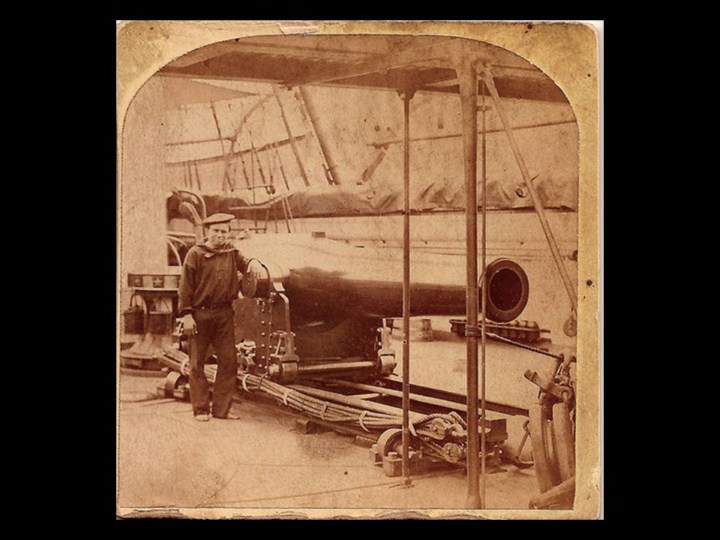| front |1 |2 |3 |4 |5 |6 |7 |8 |9 |10 |11 |12 |13 |14 |15 |16 |17 |18 |19 |20 |21 |22 |23 |24 |25 |26 |27 |28 |29 |30 |31 |32 |33 |34 |35 |36 |review |
 |
USS Passaic Smoothbore
Iron shot weighing over 150 pounds was now common, making the 24- and 32-pound size-- thrown by earlier guns--seem quite puny in comparison. What’s more, a newer generation of rifled guns that could pulverize masonry forts could do worse to those enclosed within an iron-sheathed hull. I call what results the “garbage can” effect. Imagine yourself encased in a typical galvanized steel garbage pail or a 55-gallon steel oil drum, ears unprotected and then having your antagonists hurling 50-pound cement blocks against your cocoon, one per second. With blood dripping from nose and ears, crewmen were sometimes driven mad under the barrage of both rifled and unrifled artillery. And if not driven mad, their eardrums ruptured, or--at very least-- they suffered temporary or permanent deafness. Civil War sailors frequently described ringing in the ears or tinnitus. I attended a reunion of Navy D-Day veterans some years ago and noted that almost all these aging men wore hearing aids, no doubt the result of exploding German mines, mortars, and shells encountered as they fought their way up Omaha Beach 66 years ago. With noise levels aboard Civil War ironclads routinely exceeding 130 decibels as artillery discharged or shells impacted iron armor, we can only conjecture what kind of hearing damage resulted among these warriors.
|